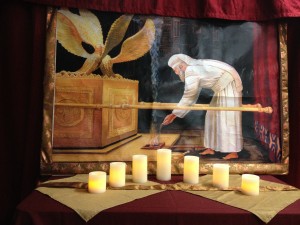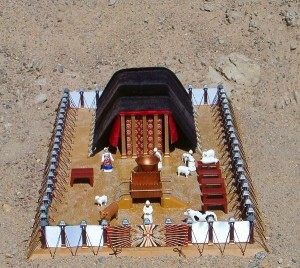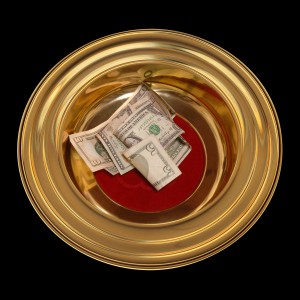The Tabernacle of Moses from its front to back represents one’s progression in one’s spiritual journey starting with initial salvation leading to eternal life in YHVH’s eternal spiritual kingdom. This view is from man’s perspective.
From YHVH’s view inside the holy of holies above the ark of the covenant in the glory cloud, looking outward, the perspective is different. We’ll discus this in a moment.
In the outer court of the tabernacle, all the rituals and furnishings pointed to death, judgment, washing or cleansing. These prophetically foreshadowed salvation through Yeshua’s atoning death on the cross, with Yeshua being the door to salvation, acceptance of his death on the cross for one’s sins followed by and baptism for the remission of sins. In the set-apart (kadosh or holy) place inside the tabernacle, everything pointed to life, light, food, fragrant incense, the fruits and gifts of the Holy Spirit — or life in a spiritual relationship with Elohim subsequent to one’s taking the initial and beginning steps of salvation. The outer court speaks of basic salvation for the redeemed believer in Yeshua, while the holy place speaks of spiritual growth and maturity, of moving from spiritual babyhood and growing into spiritual adulthood or maturity.
Paul speaks of man being subdivided into three parts — body, soul and spirit (1 Thess 5:23). The tabernacle’s outer court seems to relate more to the physical or body realm of the person, while the holy place speaks more of the soul or psychological, volitional and emotional aspects of man’s inner realm or psychological realm. Finally, the holy of holies portrays man approaching YHVH through the realm of his spirit man.
As one progresses into the tabernacle, it is as if YHVH is drawing man into an ever deeper relational walk with him starting at the most basic level progressing upward until man is finally communing with YHVH on a Spirit to spirit level (in the most holy place). It is the Father’s desire that men progressively grow until they are communing with him at the highest spiritual level (see John 4:23–24).
As noted earlier, this forward progression from the tabernacle’s entrance Continue reading





